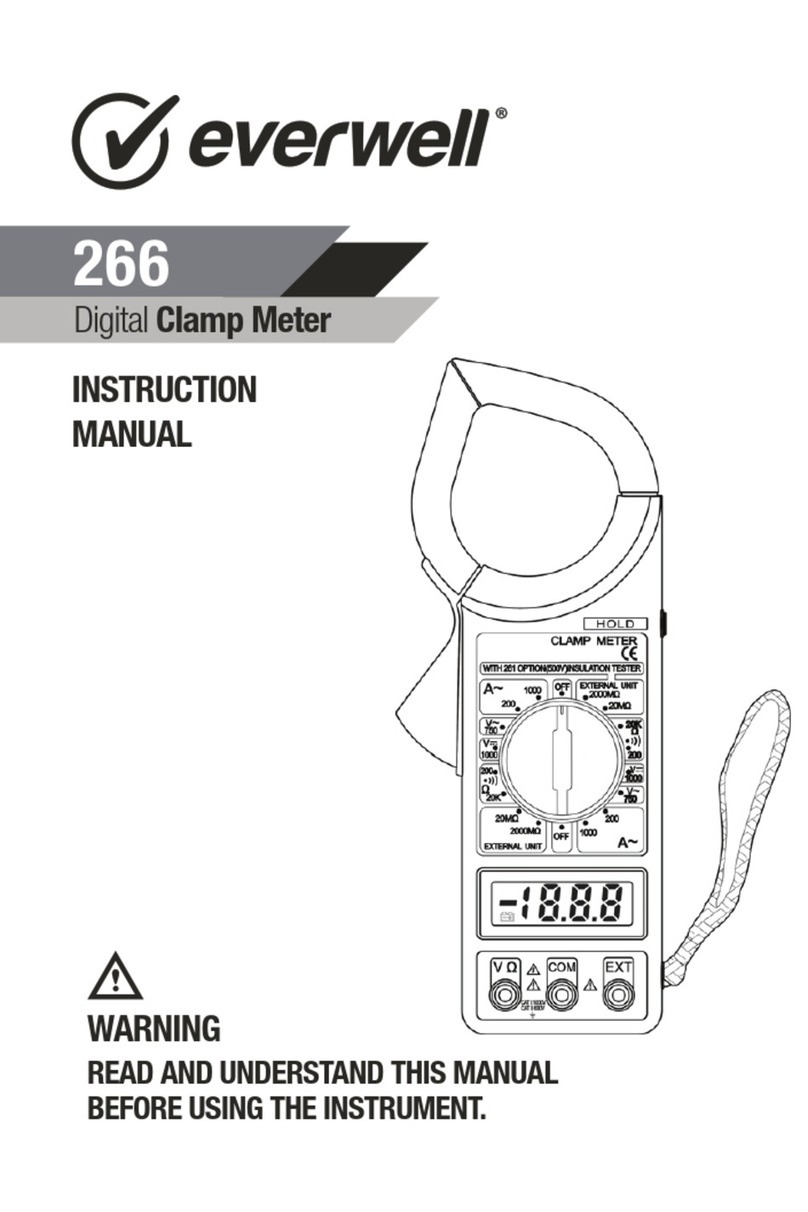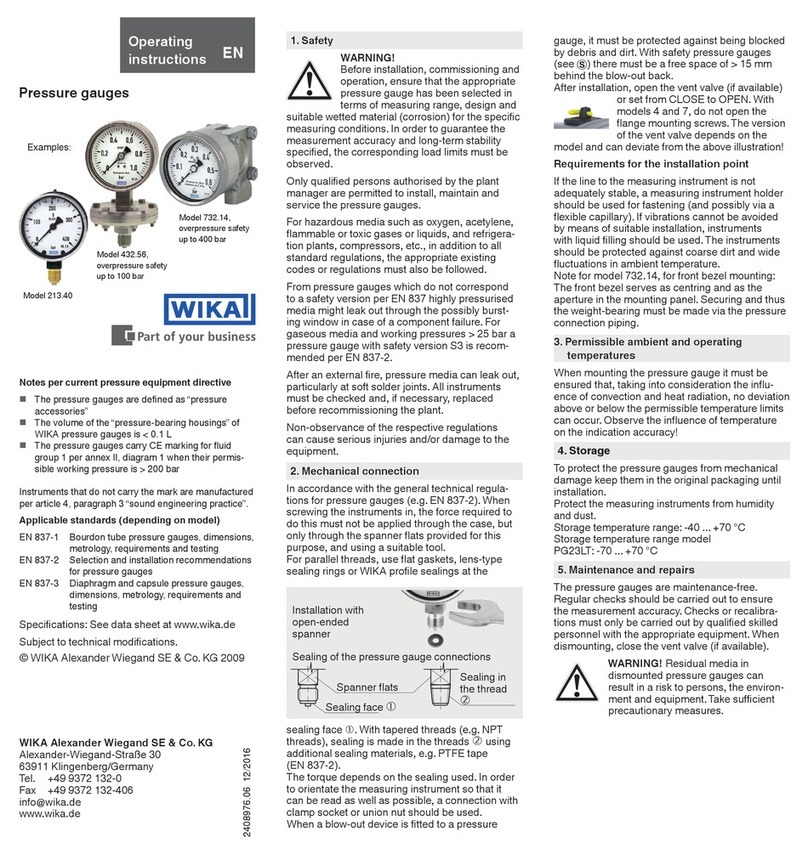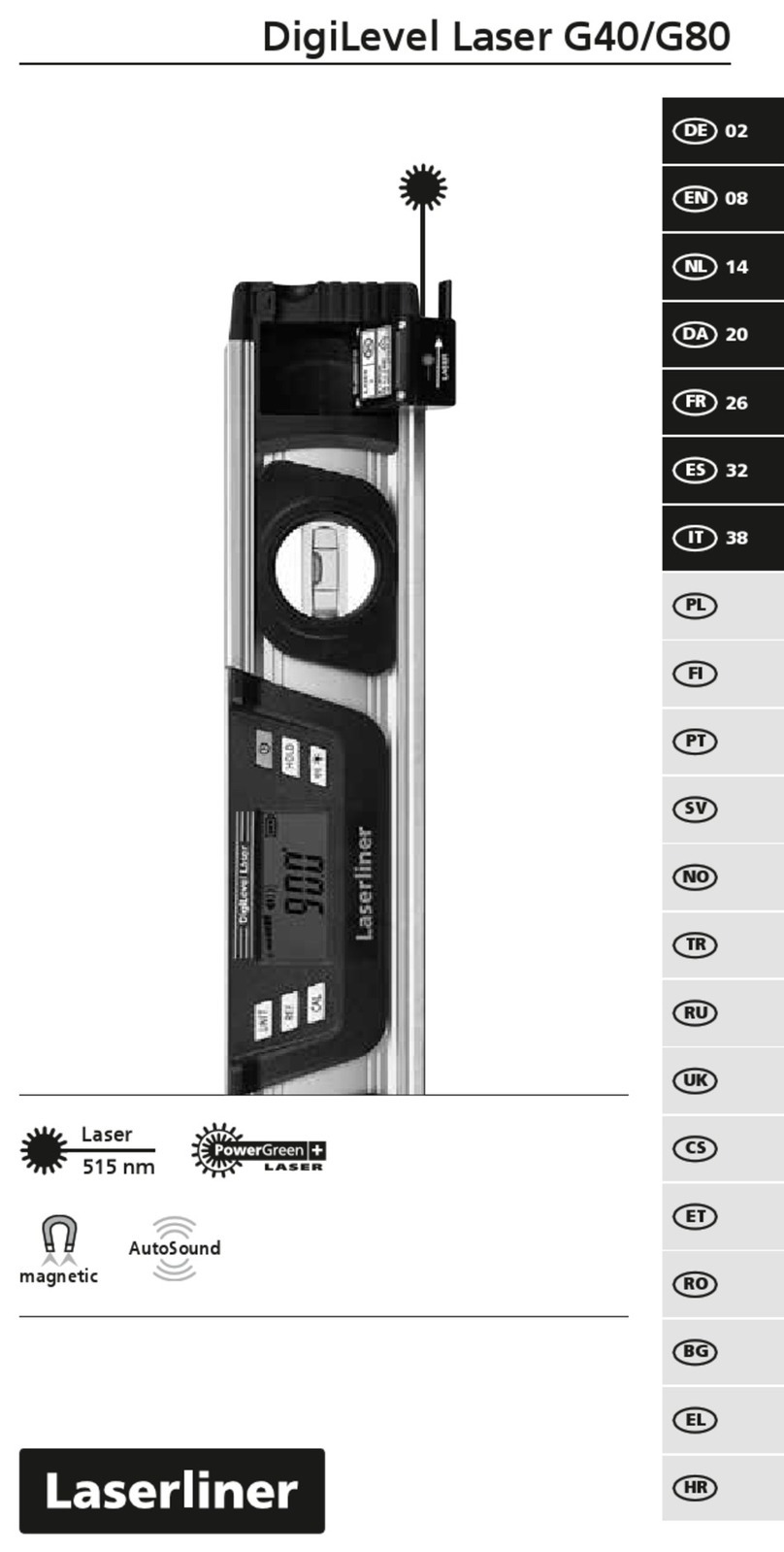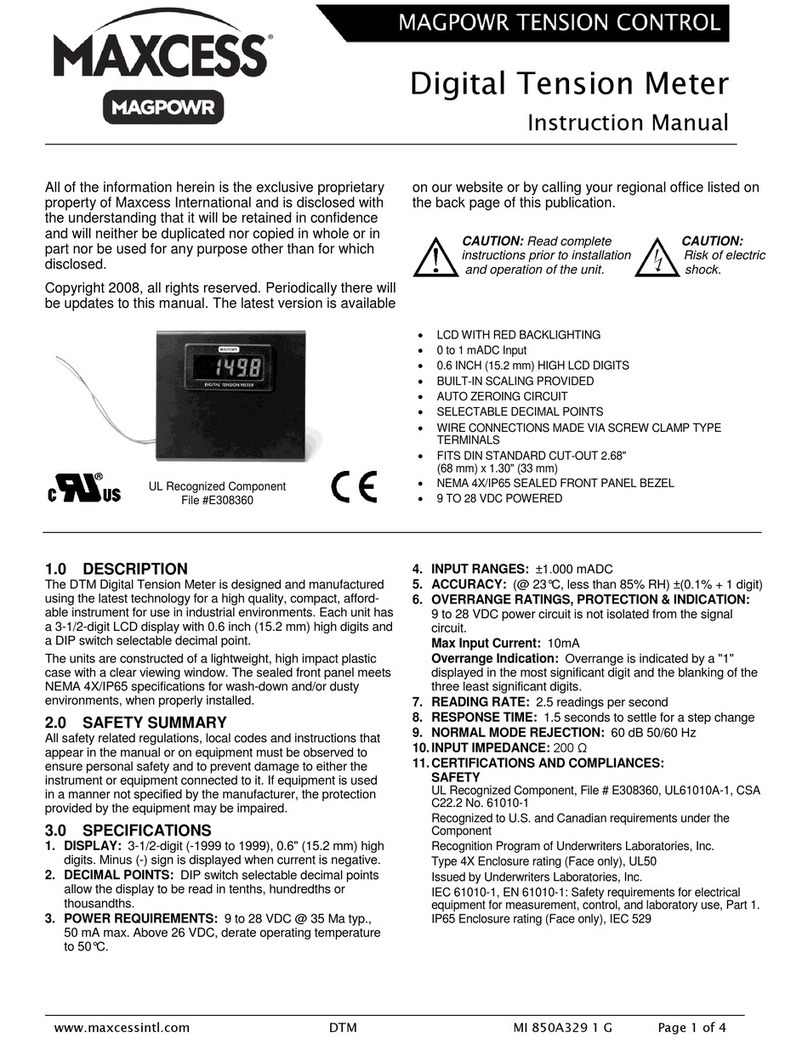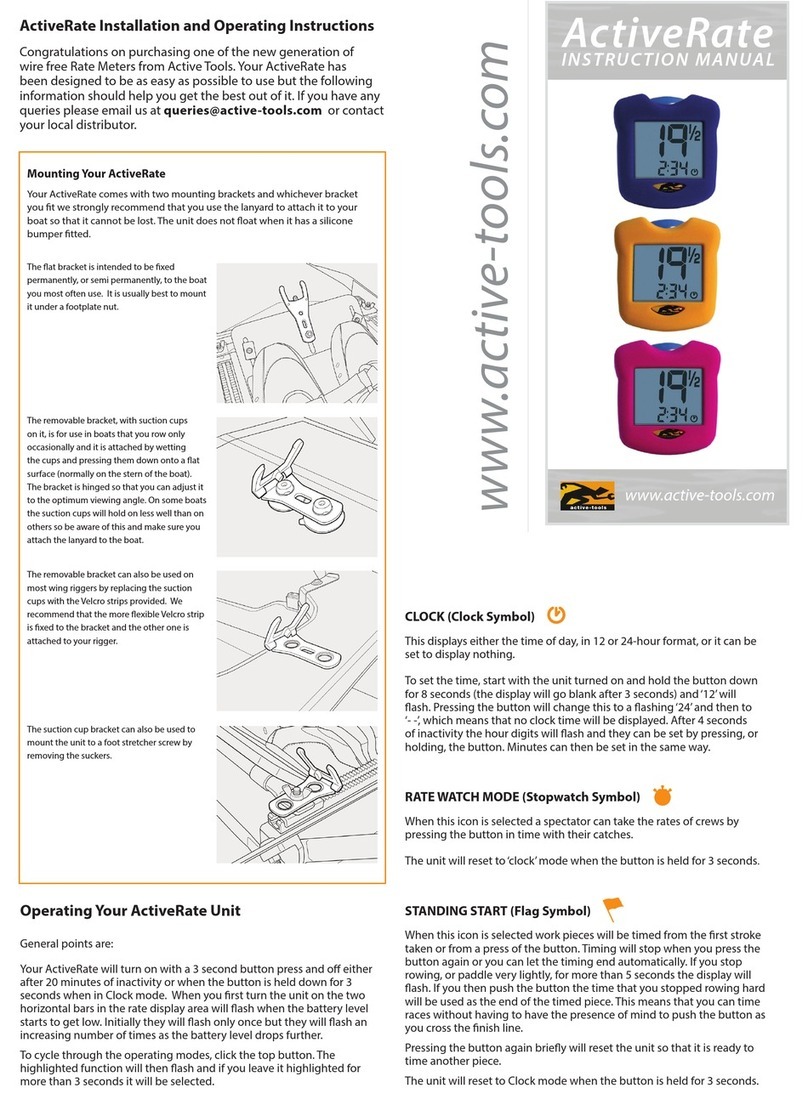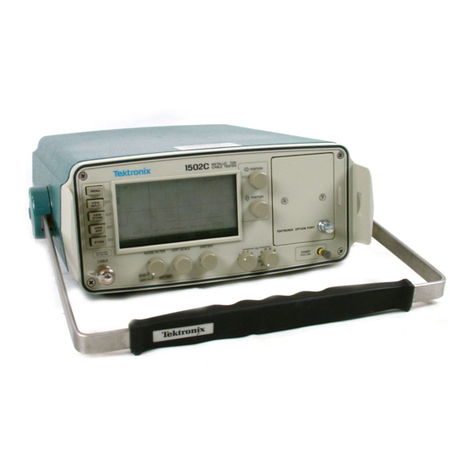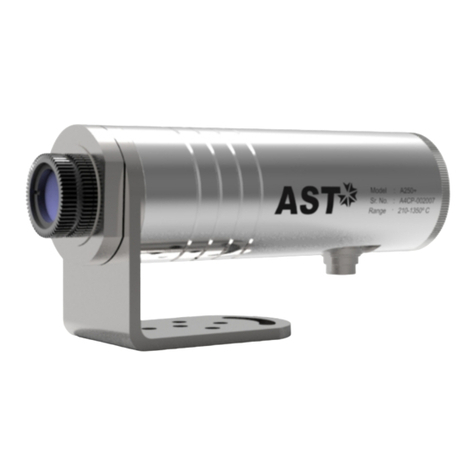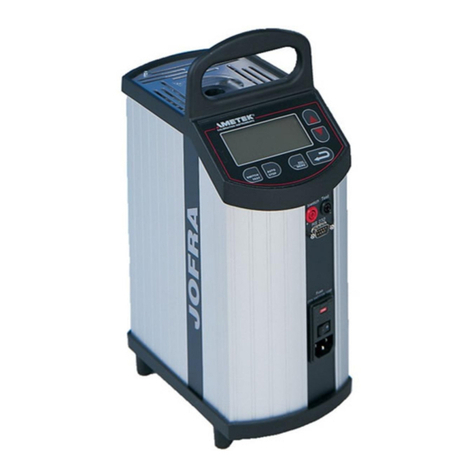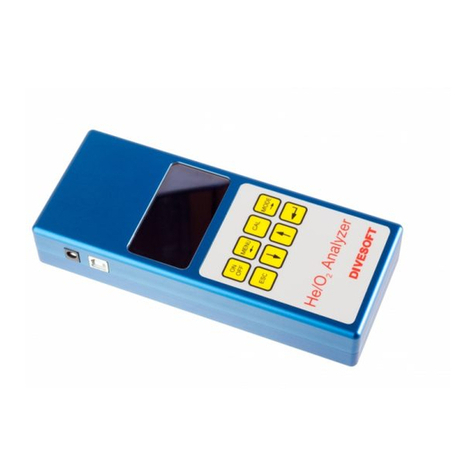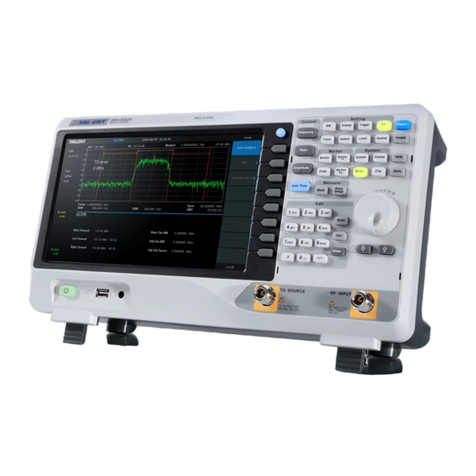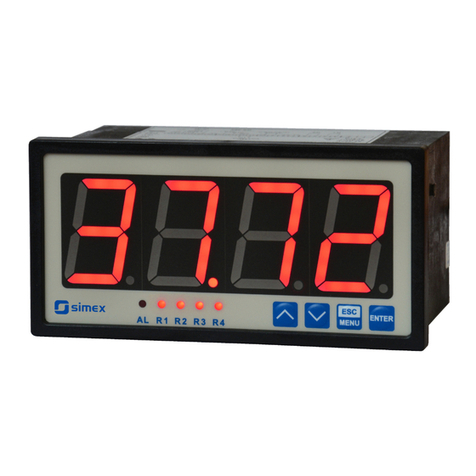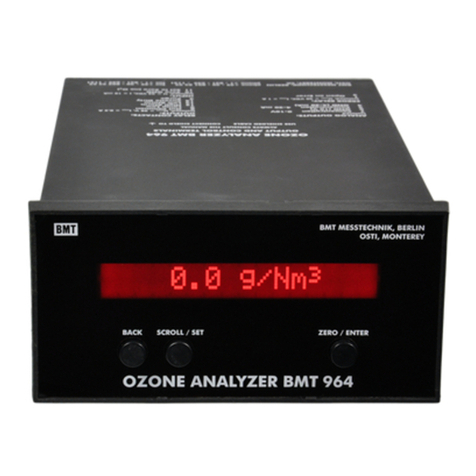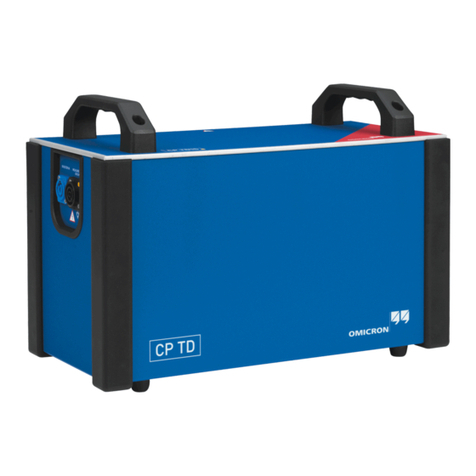Everwell DT201D Assembly instructions

OPERATOR’S
INSTRUCTION
MANUAL
DT201D
Auto Range Digital Clamp Meter
WARNING
READ AND UNDERSTAND THIS MANUAL
BEFORE USING THE INSTRUMENT.
DT201D
TRUE RMS
EN 61010-1
CAT III 600V
CATII 1000V
OFF
1000A⁓
600A⁓
60A⁓
VA⁓
mV
Hz
Duty
Hz/Duty
TEMP
COM
MAX
1000v MAX
1000v
V
OFF Select
Range
1.8.8.8

-2-
1. INTRODUCTION
This manual provides all safety information, operation
instruction, specifications and maintenance for the meter,
which is compact, handheld, and battery operated.
This instrument performs AC/DC voltage, AC Current,
Resistance, Audible Continuity, Diode and Temperature
measurements. It is a 3 5/6 digits, 6000 counts auto ranging
digital clamp multimeter.
DT201D digital clamp multimeter has been designed
according to EN61010-1 oncoming electronic measuring
instruments with an over voltage category (CAT III 600V
CAT II 1000V) and Pollution degree 2.
Warning
To avoid possible electric shock or personal injury, and to
avoid possible damage to the meter or to the equipment
under test, adhere to the following rules:
• Before using the meter inspect the case. Do not use the
meter if it is damaged or the case (or part of the case) is
removed. Look for cracks or missing plastic. Pay attention
to the insulation around the connectors.
• Inspect the test leads for damaged insulation or exposed
metal. Check the test leads for continuity.
• Do not apply more than the rated voltage, as marked on the
meter, between the terminals or between any terminal and
grounding.
• The rotary switch should be placed in the right position and
no any changeover of range shall be made during
measurement is conducted to prevent damage of the meter.
• When the meter working at an effective voltage over 60V in
DC or 30V rms in AC, special care should be taken for there

is danger of electric shock.
• Use the proper terminals, function, and range for your
measurements.
• Do not use or store the meter in an environment of high
temperature, humidity, explosive, inflammable and strong
magnetic field. The performance of the meter may
deteriorate after dampened.
• When using the test leads, keep your fingers behind the
finger guards.
• Disconnect circuit power and discharge all high-voltage
capacitors before testing resistance, continuity or diodes.
• Replace the battery as soon as the battery indicator 0000
appears. With a low battery, the meter might produce false
readings that can lead to electric shock and personal injury.
• Remove the connection between the testing leads and the
circuit being tested, and turn the meter power off before
opening the meter case.
• When servicing the meter, use only the same model
number or identical electrical specifications replacement
parts.
• The internal circuit of the meter shall not be altered at will to
avoid damage of the meter and any accident.
• Soft cloth and mild detergent should be used to clean the
surface of the meter when servicing. No abrasive and
solvent should be used to prevent the surface of the meter
from corrosion, damage and accident.
• The meter is suitable for indoor use.
• Turn the meter power off when it is not in use and take out
the battery when not using for a long time. Constantly check
the battery as it may leak when it has been using for some
time, replace the battery as soon as leaking appears. A
leaking battery will damage the meter.
-3-

2. GENERAL CHARACTERISTICS
3. ELECTRICAL SYMBOLS
Display LCD, 6000 counts updates 2/sec
LCD size 30 x 49 mm (1.2 x 1.9 in)
Polarity Indication “-” displayed automatically
Over-range Indication “OL” displayed
9V NEOA 1604,6F22 equivalent
Low Battery Indication
Storage Temperature -10°C to 50°C (14ºF to 122ºF),
less than 85%RH
Operation Temperature 0°C to 40°C (32ºF to 104ºF),
less than 80%RH
Battery Type
42mm (1.6 in)Clamp Open Jaw
245×66×45mm (9.6×2.6×1.8 in)Dimension(H×W×D)
334g (11.8oz)Weight Approx
“ ” displayed
True-RMS ACV ACA measure
DC (Direct Current).
AC (Alternating Current)
DC or AC
Important safety information
Low battery
Diode
Continuity test
Refer to the manual
Dangerous voltage maybe present
Earth ground
Auto RangeAUTO
-4-
CelsiusºC

4. PANEL DESCRIPTION
Conforms to European Union directive
Double insulated
-5-
DT201D
TRUE RMS
EN 61010-1
CAT III 600V
CATII 1000V
OFF
1000A⁓
600A⁓
60A⁓
VA⁓
mV
Hz
Duty
Hz/Duty
TEMP
COM
MAX
1000v MAX
1000v
V
OFF Select
Range
1.8.8.8
a
b
c
d
e
f h
i
j
k
g

a. Transformer Jaws
Pick up the AC Current flowing through the conductor.
b. Trigger
Press the level to open the transformer jaws when the finger
press on the level is released the jaws will close again.
c. Hz/Duty Button
Push this button to select Hz or DUTY CYCLE
measurement, at Hz positing. at AC curent position, can
measure frequency .
d. Range Button
AC/DC voltage, AC current and resistance measuring
ranges can be selected manually or automatically by
pushing the range control button. Push this button as follows
to choose range control mode and needed ranges.
e. Display
3 5/6 digit LCD, with a max. reading of 5999
f. “ ” Input Connect
High input for all except voltage , measurement will accept
banana plugs.
g. COM Input Jack
Low input for all voltage, resistance, and continuity etc
measurement will accept banana plugs.
h. “ ” Range
Resistance,continuty,capacitance,diode , Push select button
to choose needed ranges.
i. Selecting Button
Push this button to select Ω, ,or measuring function
when the function switch is set at Ω range.
j. Function Switch / Range Switch
This switch can be used to select desired function and
range.
k. D. Hold Button
When this button is pushed, LCD will show the last reading,
-6-

and “H” symbol will appear till pushed again. Back light
function, push this button for more than 3 seconds, for back
light,after 15 seconds,back light will turn off automatically.
1.Duty Cycle is selected
2.Fahrenheit temperature test is selected
3.Celsius degree test is selected
4.Continuity test is selected
5.Diode test is selected
6.Autorange mode is selected
7.Automatic power-off mode is selected
8.High voltage wanning symbol
9.Data Hold is enabled
10.MAX - Maximum reading is being displayed
11.MIN - Minimum reading is being displayed
12.DC
13.Negative sign
-7-

14.AC
15.Low Battery and replaced immediately
5. SPECIFICATIONS
Accuracy is guarantied for 1 year 23°C±5°C less than
80%RH
5-1. DC Voltage (Auto ranging)
Input Impedance: 10MΩ
Overload Protection:
600V AC RMS CAT III, 1000V AC RMS CAT II
Max. Input voltage:
600V AC RMS CAT III, 1000V AC RMS CAT II
5-2. AC Current (Auto ranging)
Measuring voltage drop: 200mV
show True-RMS value
-8-
Range Accuracy
600mV
Resolution
0.1mV ±(0.8% of rgd + 5dgts)
6V
60V
1mV
10mV ±(0.8% of rgd + 3dgts)
600V 100mV
Range Resolution Accuracy
60A
600A
10mA
100mA ±(2.5% of rgd + 10dgts)
1000A 1A
1000V 1V ±(1.0% of rgd + 5dgts)

5-3. AC Voltage (Auto ranging)
Input Impedance: 10MΩ
Input Impedance: 10MΩ
Overload Protection: 600V AC RMS CAT III, 1000V AC RMS
CAT II
Max. Input voltage: 600V AC RMS CAT III, 1000V AC RMS
CAT II
show True-RMS value
5-4. Temperature
Overload Protection: 250V DC/AC rms
5-5. Resistance (Auto Ranging)
Range Accuracy
600mV
Resolution
0.1mV ±(1.2% of rgd + 8dgts)
6V
60V
1mV
10mV ±(1.2% of rgd + 6dgts)
600V 100mV
750V 1V ±(1.2% of rgd + 8dgts)
Range AccuracyResolution
-40 ~
1370°C
-40 ~
2000°F
1ºC -40°C~150°C:±(1% + 4)
150°C~1370°C:±(2% + 3)
302°F~2000°F:±(2.5% + 4)
-40°F~302°F:±(5% + 4)
1ºF
-9-
Range Resolution Accuracy
600Ω
6KΩ
0.1Ω
1Ω ±(1.5% of rgd + 5dgts)
60KΩ 10Ω

Open Voltage: about 0.25V
Overload Protection: 250V DC/AC RMS
5-6. Diode and Continuity
Overload Protection: 250V DC/AC RMS
For continuity test: When the resistance is between 30Ω
and 100Ω, the buzzer may sound or may not sound. When
the resistance is more than 100Ω, the buzzer won’t sound.
5-7.1 Frequency (Auto Ranging)
5-7.2 Frequency ( through clamp )
5-8. Capacitance (Auto Ranging)
600KΩ
6KMΩ
100Ω
1KΩ ±(1.5% of rgd + 5dgts)
60MΩ 10KΩ
The approximate forward
voltage drop will be displayed
Open circuit
voltage:
about 1.5V
The built-in buzzer will sound
if the resistance is less than
about 30Ω.
Open circuit
voltage:
about 0.5V
Range RemarkIntroduction
Accuracy
±(1.0% of rdg + 5dgts)
Range
0 ~ 60MHz
Accuracy
±(1.5% of rdg + 5dgts)
Range
AccuracyRange
50 ~ 1KHz
-10-
±(8.0% of rdg + 5dgts)
60nF/600nF/6uF
60uF/400uF/20mF(10sec)

5-9. Duty Cycle
For value between 10% and 90% duty cycle at 50Hz.
6. OPERATION INSTRUCTION
6-1. Measuring Voltage
1. Connect the BLACK test lead to the “COM” jack and the
RED to the “V” jack.
2. Set the function switch to V or mV range.
3. Press “SELECT” key to select AC or DC voltage test.
V or V are declared on the LCD.
4. Connect the test leads across the source or load to be
measured.
5. Read LCD display. The polarity of the RED lead
connection will be indicated when making a measurement.
Note:
a. In small range example mV range , the meter may
display an unstable reading when the test leads have
not been connected to the load to be measured. It is
normal and will not affect the measurements.
b. To avoid damage to the meter, don’t measure a
voltage which exceeds 600V (for DC voltage
measurement) or 600V(for AC voltage measurement),
under CAT III conditions.and 1000V(for DC voltage)
750V(for AC voltage) under CAT II conditions.
6-2. Measuring Current
1. Set Function/Range switch to the 60A 600A 1000A
range.
Range Accuracy
0.01%~99.9%
Resolution
0.01% ±1%
-11-

2. Press the trigger to open the transformer jaws and clamp
one conductor only it is impossible to make measurements
when two or three conductors are clamped at the same
time.
3. Display reading is flowing the conductor AC current.
6-3. Measure Resistance
1. Connect the BLACK test lead to the “COM” jack and the
RED to the“ ”jack (Note: The polarity of the red
test lead is positive “+”).
2. Set the function switch to range.
3. Press“RANGE” button can be select manually
measurement.
4. Press “SELECT” button to select resistance
measurement mode,the symbol “MΩ” will appear as an
indicator.
5. Connect the test leads across the load to be measured.
6. Read the reading on the display.
Note:
a. For resistance measurements >1MΩ, the meter may
take a few seconds to stabilize reading. This is normal
for high-resistance measurement.
b. When the input is not connected, i.e. at open circuit,
the symbol “OL” will be displayed as an over range
indicator.
c. Before measuring in-circuit resistance, be sure that
the circuit under test has all power removed and all
capacitors are fully discharged.
-12-

6-4. Continuity Test
1. Connect the BLACK test lead to the “COM” jack and the
RED to the “ ” jack (Note: The polarity of the red
test lead is positive “+”).
2. Set the function switch to “ ” range
3. Press the “SELECT” button to select continuity
measurement mode, and the symbol “ ” will appear as
an indicator.
4. Connect the test leads across the load to be measured.
5. If the circuit resistance is lower than about 30Ω, the
built-in buzzer will sound.
6-5. Diode Test
1. Connect the BLACK test lead to the “COM” jack and the
RED to the “ ” jack (Note: The polarity of the red
test lead is positive “+”).
2. Set the function switch to“ ” range
3. Press the “SELECT” button to select continuity
measurement mode, and the symbol “ ” will appear as
an indicator.
4. Connect the RED test lead to the anode of the diode to
be tested and the black test lead to the cathode.
5. The meter will show the approximate forward voltage of
the diode. If the connections are reversed, “OL” will be
shown on the display.
6-6. Measuring Temperature
1. Set the function range switch at the TEMP position.
-13-

2. Make sure the polarity of the thermocouple is correct; put
the cold end (free end) of the thermocouple sensor into the
terminal (black to COM jack and red to “ ” jack).
3. Set the working end (testing end) on or inside the object
under test.
4. The value of the temperature is shown on the display in
degree centigrade (°C).
5. Press the “SELECT” button, fahrenheit and celsius can
be converted to each other.
6-7. Capacitance Measuring
1. Connect the BLACK test lead to the “COM” jack and the
RED to the “ ” jack.
2. Set the function switch at “ ” position.
(NOTE: The polarity of the RED lead is positive “+”)
3. Connect test leads across the capacitor under measure
and be sure the polarity of connection is observed.
Note: When the capacitance under measure is above
100uF, it needs at least 5 second to make readings stable.
6-8. Frequency Measuring (auto range)
1. Set the function range switch to the required “Hz/DUTY”
position.
2. Connect the BLACK test lead to the “COM” jack and the
RED to the “ ” jack (Note: The polarity of the red
test lead is positive “+”).
3. Connect the test leads across the load to be measured.
-14-

Note: Do not apply more than 250V RMS to the input.
Indication is possible a voltage higher than 100V rms, but
reading maybe out of specification.
At the same time using the clamp hand to test AC current,
press key, the meter shows the frequency of the
measured current.
NOTE:
a. The testing temperature is displayed automatically
when the thermocouple is put into the testing holes.
b. The surrounding temperature is shown when the
circuit of the sensor is cut off.
c. The limit temperature measured by the thermocouple
given together with the instrument is 250°C; 300°C is
acceptable within short period, if you need to measure
higher temperature,you must buy a high temperature
K type.
7. AUTO POWER OFF
If you don’t operate the meter for about 15 minutes, it will
turn off automatically. To turn on it again, just rotate the
range switch or press a button.
8. BATTERY REPLACEMENT
If the sign “ ” appear on the display, it indicates battery
should be replaced. Remove screws and open the back
case, replace the exhausted battery with new batteries
(9V NEDA 1604,6F22 equivalent).
-15-

9. ACCESSORIES
Owners manual: 1 piece
Test leads: 1 pair
K type thermocouple: 1 piece
Battery(9V 6F22): 1 piece
-16-
DISPOSAL
Dear Customer,
If you as some point intend to dispose of
this product, then please keep in mind
that many of its components consist of
valuable materials, which can be
recycled. Please do not discharge it in the
garbage bin, but check with your local
council for recycling facilities in your area.
Table of contents
Other Everwell Measuring Instrument manuals
